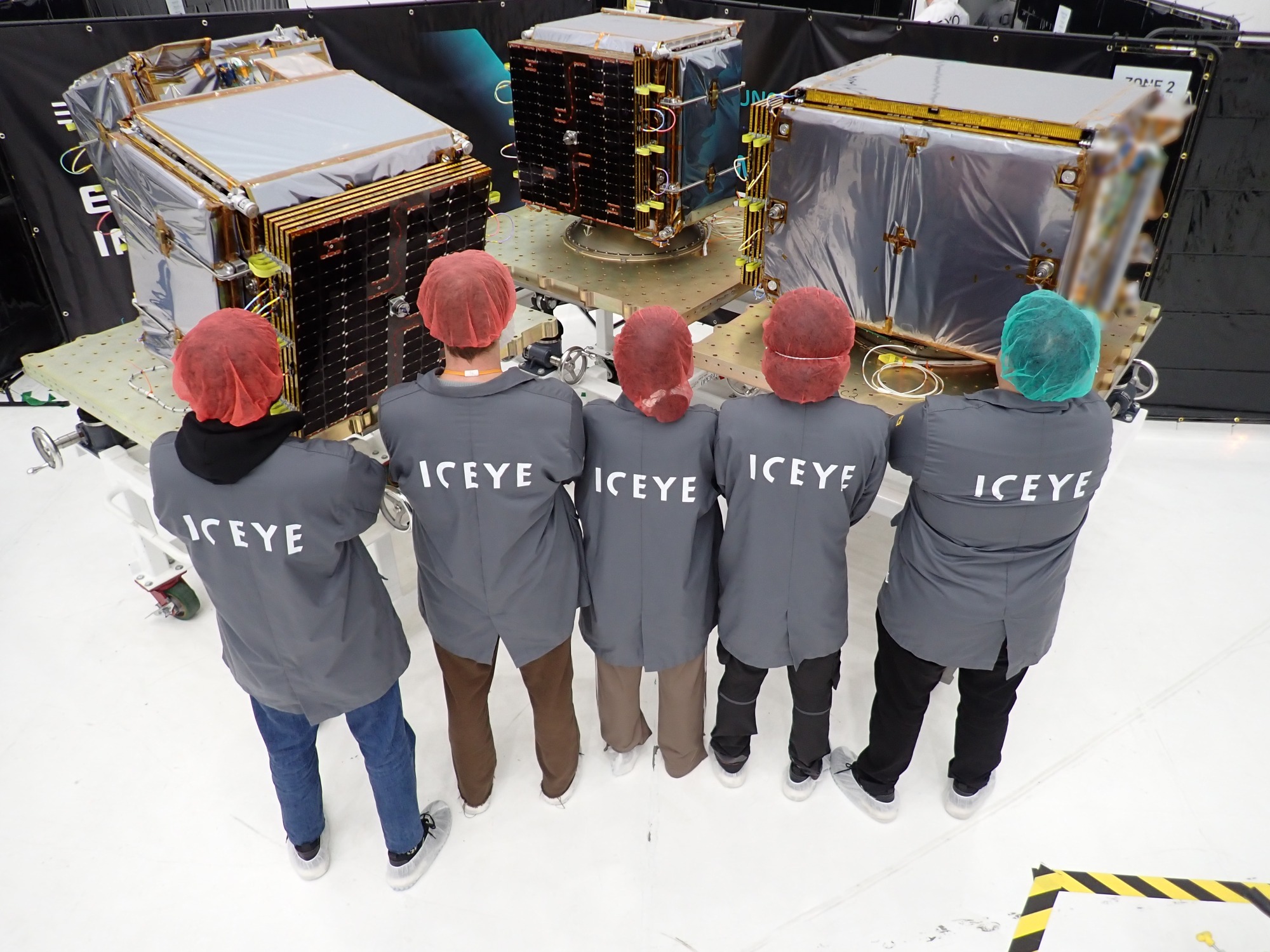
WARSAW, Poland — Finnish SAR constellation operator Iceye and Japan’s aerospace and defense company IHI Corporation recently signed a deal to develop an Earth observation satellite constellation for security, civilian and commercial use.
Under the latest deal, IHI Corporation ordered four satellites and an associated image acquisition system from Iceye, with the option to purchase 20 additional satellites at a later stage. Iceye declined to share the value of the contract. The first satellites for IHI Corporation are expected to begin phased commissioning and data delivery around April 2026, said Witold Witkowicz, the CEO of the company’s subsidiary Iceye Poland.
Witkowicz, told <em>SpaceNews that Iceye has produced 57 satellites to date, more than 30 of which are part of its constellation. The remaining spacecraft have been either sold to users or deorbited.
Senior company representatives say that, while Iceye continues to seek new international business and develop its synthetic aperture radar (SAR) satellite offerings, Iceye is also readying to expand its portfolio with a further two ranges: optical Earth observation satellites and signals intelligence (SIGINT) satellites.
While the company headquarters is based in Finland, Iceye maintains a strong presence in Poland’s capital of Warsaw where the business runs an operations, engineering and R&D hub and carries out part of its manufacturing activities.
“The main task of the Polish subsidiary has been to operate the satellites of the entire Iceye constellation,” Witkowicz said. “We have performed this task 24 hours a day, seven days a week since January 2018 when our first satellite, Iceye-X1, was launched.”
The satellites that are to be developed for IHI Corporation will also be operated by the Warsaw hub, Witkowicz said. Meanwhile, the business is advancing plans to further broaden its portfolio from its current focus on SAR satellites.
Witkowicz said that Iceye’s Gen4 satellites are enabled with a ground resolution of up to 16 cm, operating within an imaging bandwidth of 1200 MHz, and enabled with a data downlink of around 700 Mbps,. Iceye did not disclose which generation of satellites IHI purchased.
Witkowicz said the spacecraft, which it launched for the first time in September 2025, represents a new SAR satellite performance standard with an expanded 400 kilometer high-resolution coverage area which enables “more images per orbital pass and higher revisit rates, resulting in the world’s highest-fidelity commercial SAR imagery.”
A Gen4 satellite is able to capture up to 500 images per day, with up to 50% concentrated within a 2,000-km-wide region per orbit, according to Witkowicz.
